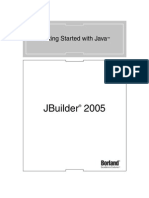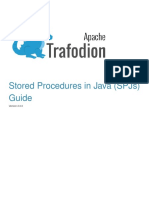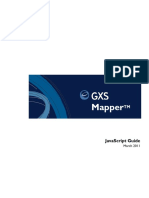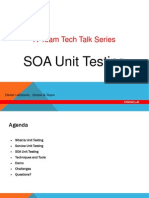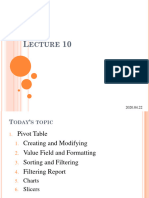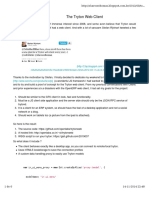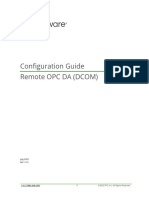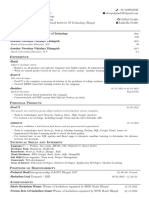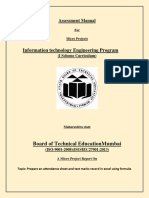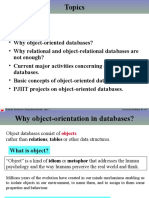Title Page
Working with the webMethods Product Suite
and the Java Service Wrapper
Version 9.6
April 2014
�Copyright
This document applies to webMethods Product Suite Version 9.6 and to all subsequent releases.
Specifications contained herein are subject to change and these changes will be reported in subsequent release notes or new editions.
Copyright 2014 Software AG, Darmstadt, Germany and/or Software AG USA Inc., Reston, VA, USA, and/or its subsidiaries and/or its
affiliates and/or their licensors.
The name Software AG and all Software AG product names are either trademarks or registered trademarks of Software AG and/or
Software AG USA Inc. and/or its subsidiaries and/or its affiliates and/or their licensors. Other company and product names mentioned
herein may be trademarks of their respective owners.
Detailed information on trademarks and patents owned by Software AG and/or its subsidiaries is located at
http://documentation.softwareag.com/legal/.
Use of this software is subject to adherence to Software AG's licensing conditions and terms. These terms are part of the product
documentation, located at http://documentation.softwareag.com/legal/ and/or in the root installation directory of the licensed product(s).
This software may include portions of third-party products. For third-party copyright notices and license terms, please refer to "License
Texts, Copyright Notices and Disclaimers of Third Party Products. This document is part of the product documentation, located at
http://documentation.softwareag.com/legal/ and/or in the root installation directory of the licensed product(s).
Document ID: WEBM-JSW-96-20140415
�Table of Contents
About this Guide . . . . . . . . . . . . . . . . . . . . . . . . . . . . . . . . . . . . . . . . . . . . . . . . . . . . . . . . . . . .
Document Conventions . . . . . . . . . . . . . . . . . . . . . . . . . . . . . . . . . . . . . . . . . . . . . . . . . . . .
Documentation Installation . . . . . . . . . . . . . . . . . . . . . . . . . . . . . . . . . . . . . . . . . . . . . . . . .
Online Information . . . . . . . . . . . . . . . . . . . . . . . . . . . . . . . . . . . . . . . . . . . . . . . . . . . . . . . .
5
5
5
6
1. The Java Service Wrapper . . . . . . . . . . . . . . . . . . . . . . . . . . . . . . . . . . . . . . . . . . . . . . . .
What is the Java Service Wrapper? . . . . . . . . . . . . . . . . . . . . . . . . . . . . . . . . . . . . . . . . . .
Determining Which Version of the Java Service Wrapper Your webMethods Product Is
Using . . . . . . . . . . . . . . . . . . . . . . . . . . . . . . . . . . . . . . . . . . . . . . . . . . . . . . . . . . . . . . . .
The Java Service Wrapper Configuration Files . . . . . . . . . . . . . . . . . . . . . . . . . . . . . . . . . .
Viewing and Editing the Java Service Wrapper Properties . . . . . . . . . . . . . . . . . . . . .
JVM Configuration . . . . . . . . . . . . . . . . . . . . . . . . . . . . . . . . . . . . . . . . . . . . . . . . . . . . . . . .
JVM Configuration Properties . . . . . . . . . . . . . . . . . . . . . . . . . . . . . . . . . . . . . . . . . . . .
Memory Properties . . . . . . . . . . . . . . . . . . . . . . . . . . . . . . . . . . . . . . . . . . . . . . . .
Classpath Properties . . . . . . . . . . . . . . . . . . . . . . . . . . . . . . . . . . . . . . . . . . . . . . .
Additional Properties . . . . . . . . . . . . . . . . . . . . . . . . . . . . . . . . . . . . . . . . . . . . . . .
The Wrapper Log . . . . . . . . . . . . . . . . . . . . . . . . . . . . . . . . . . . . . . . . . . . . . . . . . . . . . . . . .
Logging Properties . . . . . . . . . . . . . . . . . . . . . . . . . . . . . . . . . . . . . . . . . . . . . . . . . . . .
Fault Monitoring . . . . . . . . . . . . . . . . . . . . . . . . . . . . . . . . . . . . . . . . . . . . . . . . . . . . . . . . . .
Fault-Monitoring Properties . . . . . . . . . . . . . . . . . . . . . . . . . . . . . . . . . . . . . . . . . . . . .
JVM Timeout Properties . . . . . . . . . . . . . . . . . . . . . . . . . . . . . . . . . . . . . . . . . . . .
Deadlock-Detection Properties . . . . . . . . . . . . . . . . . . . . . . . . . . . . . . . . . . . . . . .
Console Filtering Properties . . . . . . . . . . . . . . . . . . . . . . . . . . . . . . . . . . . . . . . . .
Generating a Thread Dump . . . . . . . . . . . . . . . . . . . . . . . . . . . . . . . . . . . . . . . . . . . . . . . . .
9
9
9
10
10
11
11
12
12
12
13
13
14
15
15
15
16
16
A. Software AG Common Platform Profile Names . . . . . . . . . . . . . . . . . . . . . . . . . . . . . . .
17
Working with the webMethods Product Suite and the Java Service Wrapper Version 9.6
Working with the webMethods Product Suite and the Java Service Wrapper Version 9.6
�About this Guide
This guide provides an introduction to the ways in which the webMethods product suite
uses the Java Service Wrapper. It describes property settings you use to configure the Java
Service Wrapper and provides procedures for using utility commands provided by the
wrapper.
Document Conventions
Convention
Description
Bold
Identifies elements on a screen.
Narrowfont
Identifies storage locations for services on webMethods Integration
Server, using the convention folder.subfolder:service.
UPPERCASE
Identifies keyboard keys. Keys you must press simultaneously are
joined with a plus sign (+).
Italic
Identifies variables for which you must supply values specific to
your own situation or environment. Identifies new terms the first
time they occur in the text.
Monospace font
Identifies text you must type or messages displayed by the system.
{}
Indicates a set of choices from which you must choose one. Type
only the information inside the curly braces. Do not type the { }
symbols.
Separates two mutually exclusive choices in a syntax line. Type one
of these choices. Do not type the | symbol.
[]
Indicates one or more options. Type only the information inside the
square brackets. Do not type the [ ] symbols.
...
Indicates that you can type multiple options of the same type. Type
only the information. Do not type the ellipsis (...).
Documentation Installation
You can download the product documentation using the Software AG Installer. The
documentation is downloaded to a central directory named _documentation in the main
installation directory (SoftwareAG by default).
Working with the webMethods Product Suite and the Java Service Wrapper Version 9.6
�About this Guide
Online Information
You can find additional information about Software AG products at the locations listed
below.
If you want to...
Go to...
Access the latest version of product
documentation.
Software AG Documentation website
Find information about product releases and
tools that you can use to resolve problems.
Empower Product Support website
http://documentation.softwareag.com
https://empower.softwareag.com
See the Knowledge Center to:
Read technical articles and papers.
Download fixes and service packs (9.0
SP1 and earlier).
Learn about critical alerts.
See the Products area to:
Download products.
Download certified samples.
Get information about product
availability.
Access older versions of product
documentation.
Submit feature/enhancement requests.
Working with the webMethods Product Suite and the Java Service Wrapper Version 9.6
�About this Guide
If you want to...
Go to...
Access additional articles, demos, and
tutorials.
Software AG Developer Community for
webMethods
Obtain technical information, useful
resources, and online discussion forums,
moderated by Software AG professionals,
to help you do more with Software AG
technology.
http://communities.softwareag.com/
Use the online discussion forums to
exchange best practices and chat with
other experts.
Expand your knowledge about product
documentation, code samples, articles,
online seminars, and tutorials.
Link to external websites that discuss
open standards and many web
technology topics.
See how other customers are streamlining
their operations with technology from
Software AG.
Working with the webMethods Product Suite and the Java Service Wrapper Version 9.6
�About this Guide
Working with the webMethods Product Suite and the Java Service Wrapper Version 9.6
The Java Service Wrapper
What is the Java Service Wrapper?
The Java Service Wrapper is an application developed by Tanuki Software, Ltd. Some
webMethods products use the Java Service Wrapper to:
Start and stop the Java Virtual Machines (JVM) in which they run.
Record the console output from the JVM in a log file.
Monitor the JVM for various fault conditions and take a prescribed action when a
fault occurs.
Enable you to obtain a thread dump when the JVM is running as a service under
Windows.
This guide discusses webMethods products that use the Java Service Wrapper and run on
the Software AG Common Platform. There are some webMethods products that use the
Java Service Wrapper but do not run on the Software AG Common Platform. For
information about how these products use the wrapper, see their product
documentation.
Determining Which Version of the Java Service Wrapper Your
webMethods Product Is Using
The webMethods products running in your Software AG installation might use different
versions of the Java Service Wrapper. To determine which version of the wrapper a given
product is using, use the following procedure. (Knowing the version number is helpful
when you refer to the product documentation for the Java Service Wrapper on the Tanuki
Software, Ltd. website.)
To determine which version of the wrapper your webMethods product is using
1
From the command line on the machine where the webMethods product is installed,
navigate to the following directory:
Software AG_directory\profiles\profile name\bin
Note: profile name is the name of the profile for your webMethods product. For a list of
products and their corresponding profile names, see Software AG Common
Platform Profile Names on page 17.
Working with the webMethods Product Suite and the Java Service Wrapper Version 9.6
�1 The Java Service Wrapper
Execute the following command:
service -version
The Java Service Wrapper Configuration Files
webMethods products that run on the Software AG Common Platform each have a pair
of configuration files for the Java Service Wrapper. The properties in these files determine
the configuration of the JVM that the wrapper launches for the given product (i.e., heap
size, Java system property settings, and so forth), and specify the behavior of the logging
and monitoring features of the Java Service Wrapper.
File name
Description
wrapper.conf
Contains property settings that are installed by the
webMethods product.
Important! Do not modify the contents of this file unless
instructed to do so by Software AG.
custom_wrapper.conf
Contains properties that modify the original settings
installed by the webMethods product. Settings in this file
override the settings in wrapper.conf.
If you need to modify the property settings for the Java
Service Wrapper, make your changes in this file.
Important! The webMethods products that use the Java Service Wrapper have different
policies regarding which properties you can configure. Before changing any property
settings in the configuration files, review the Java Service Wrapper section in the
administrators guide for your particular webMethods product to determine which
configuration changes it supports.
These configuration files are located in the following directory:
Software AG_directory\profiles\profile name\configuration
Note: profile name is the name of the profile for your webMethods product. For a list of
products and their corresponding profile names, see Software AG Common Platform
Profile Names on page 17.
Viewing and Editing the Java Service Wrapper Properties
Use the following procedure to view or edit the configuration properties for the Java
Service Wrapper.
10
Working with the webMethods Product Suite and the Java Service Wrapper Version 9.6
�1 The Java Service Wrapper
To view or edit the Java Service Wrapper properties
1
Open the following configuration files in a text editor:
Software AG_directory\profiles\profile name\wrapper.conf
Software AG_directory\profiles\profile name\custom_wrapper.conf
Examine the properties in both files. In cases where a property exists in both files, the
property in custom_wrapper.conf overrides the one in wrapper.conf.
If you need to modify a property, do the following:
a
Add the property to custom_wrapper.conf if it does not already exist in that file.
Edit the property setting in custom_wrapper.conf. Do not make any changes to
wrapper.conf.
If you made changes to custom_wrapper.conf, save the file.
Close the wrapper.conf file without saving it.
Restart the webMethods product.
Important! When working with sequenced attribute properties, make sure that the
sequence of properties in custom_wrapper.conf matches the sequence of properties in
wrapper.conf.
JVM Configuration
The Java Service Wrapper configuration files include properties for specifying Java
startup parameters (for example, heap size, PermGen size, and classpath) and for passing
Java system properties into the JVM (that is, any property you would pass to the JVM
using the -D option on the command line).
The Java Service Wrapper uses these properties to configure the JVM that it launches for a
given webMethods product.
JVM Configuration Properties
You can use the following properties to configure the JVM that the Java Service Wrapper
launches. To modify these properties, edit the custom_wrapper.conf file using the
procedure in Viewing and Editing the Java Service Wrapper Properties on page 10.
For additional details about these parameters, refer to the product documentation on the
Tanuki Software, Ltd. website.
Important! Review the Java Service Wrapper section in the administrators guide for your
particular webMethods product to determine which of the following JVM configuration
properties you can configure.
Working with the webMethods Product Suite and the Java Service Wrapper Version 9.6
11
�1 The Java Service Wrapper
Important! If you are using the webMethods Integration Server, do not modify any of the following
settings. Integration Server uses a script file to set the JVM configuration properties. To set
the JVM configuration properties on webMethods Integration Server, see the section on
configuring the JVM in the webMethods Integration Server Administrators Guide.
Memory Properties
Use the following properties to specify size of the Java heap.
This property...
Specifies...
wrapper.java.initmemory
The initial size (in MB) of the Java heap.
wrapper.java.maxmemory
The maximum size (in MB) to which the Java heap can
grow.
Classpath Properties
Use wrapper.java.classpath properties to specify jars or directories in the classpath.
Property
Specifies
wrapper.java.classpath.n
A jar or directory in the classpath. Each
wrapper.java.classpath property requires a unique
sequence number, n, at the end of the property name.
The sequence numbers specify the order of the jars or
directories in the classpath.
For example, the following classpath properties define
a classpath made up of three directories:
wrapper.java.classpath.1=%myRoot%wrapper.jar
wrapper.java.classpath.2=%myRoot%myApp.jar
wrapper.java.classpath.3=%myRoot%myCommon.jar
To add another directory to this classpath, you would
add a wrapper.java.classpath.4 property to the end
of this list.
Additional Properties
Use wrapper.java.additional properties to set additional Java parameters to pass to the
JVM when it is launched.
12
Working with the webMethods Product Suite and the Java Service Wrapper Version 9.6
�1 The Java Service Wrapper
Property
Specifies
wrapper.java.additional.n
A Java option to be passed in on the command line.
Each wrapper.java.additional property requires a
unique sequence number, n, at the end of the property
name. The sequence numbers specify the order in which
the options will appear in the command line.
In the following example, the wrapper.java.additional
property is used to add three options to the java
command line.
wrapper.java.additional.1=-Declipse.ignoreApp=true
wrapper.java.additional.2=-Dosgi.noShutdown=true
wrapper.java.additional.3=-XX:MaxPermSize=256M
To add another option to the command line, you would
add a wrapper.java.additional.4 property to the end of
the list.
The Wrapper Log
The Java Service Wrapper writes the console output from the JVM to a log file. This log
includes stack traces that the JVM produces when a process throws an exception. It also
includes any thread dumps you generate from the JVM. The wrapper log is particularly
useful when a webMethods product runs as a Windows service, because console output
is not normally available to you in this mode.
The log resides in the following directory:
Software AG_directory\profiles\profile name\logs\wrapper.log
Note: profile name is the name of the profile for your webMethods product. For a list of
products and their corresponding profile names, see Software AG Common Platform
Profile Names on page 17.
Logging Properties
The following properties are used to configure the content, format, and behavior of the
wrapper log. These properties include settings to limit the size of the log file and specify
how many old log files to retain. To modify these properties, edit the
custom_wrapper.conf file using the procedure in Viewing and Editing the Java Service
Wrapper Properties on page 10.
For additional details about these parameters, refer to the product documentation for the
Java Service Wrapper on the Tanuki Software, Ltd. website.
Working with the webMethods Product Suite and the Java Service Wrapper Version 9.6
13
�1 The Java Service Wrapper
Important! Review the Java Service Wrapper section in the administrators guide for your
particular webMethods product to determine which of the following logging properties
you can configure.
This property...
Specifies...
wrapper.console.loglevel
The level of detail displayed in the console.
wrapper.console.format
The format of the messages displayed in the console.
wrapper.logfile
The file into which console output for Integration
Server is logged.
wrapper.logfile.loglevel
The level of detail recorded in the wrapper log file.
This setting must be a level that is equal to or lower
than the setting in wrapper.console.loglevel.
wrapper.logfile.format
The format of the messages recorded in the wrapper
log file.
wrapper.logfile.maxsize
The maximum size to which the log can grow.
wrapper.logfile.maxfiles
The number of old logs the Java Service Wrapper
retains.
wrapper.syslog.loglevel
Which messages are written to the Event Log on
Windows systems, or the syslog on UNIX systems.
Fault Monitoring
The Java Service Wrapper can monitor the JVM and restart the JVM or perform other
actions when it detects specified fault conditions. The fault-monitoring features the
wrapper provides are:
Detecting a nonoperational (i.e., hung) JVM. After the Java Service Wrapper starts the JVM,
it pings the JVM periodically to check whether it is operational. If the JVM does not
respond to a ping within a specified interval, the Java Service Wrapper assumes that
the JVM has stopped functioning and restarts it.
Properties in the Java Service Wrapper configuration files determine the ping interval
and timeout period. Each webMethods product configures theses properties
differently. Certain products disable this feature entirely.
Detecting thread deadlocks in the JVM. A thread deadlock occurs when two or more
threads attempt to lock resources in a manner that causes all threads to wait
indefinitely. The Java Service Wrapper can monitor the JVM for a deadlock condition
and take a specified action (for example, restarting the JVM) when the condition
occurs.
14
Working with the webMethods Product Suite and the Java Service Wrapper Version 9.6
�1 The Java Service Wrapper
Properties in the Java Service Wrapper configuration files determine whether the
deadlock detection is enabled, how often it checks for deadlock threads, and what
action to take when a deadlock occurs. Most webMethods products disable this
feature by default.
Detecting specified messages in the console output. The Java Service Wrapper can monitor
the console output and take a specified action when a given string of text appears.
This feature is often used to watch for out-of-memory messages.
Properties in the Java Service Wrapper configuration files specify the string of text to
watch for and the action to take when the string is detected.
Fault-Monitoring Properties
The following properties are used to configure the fault-monitoring features in the Java
Service Wrapper. To modify these properties, edit the custom_wrapper.conf file using the
procedure in Viewing and Editing the Java Service Wrapper Properties on page 10.
For additional details about these parameters, refer to the product documentation for the
Java Service Wrapper on the Tanuki Software, Ltd. website.
Important! Review the Java Service Wrapper section in the administrators guide for your
particular webMethods product to determine which of the following properties you can
configure.
JVM Timeout Properties
Property
Specifies
wrapper.ping.interval
How often, in seconds, the Java Service Wrapper
pings the JVM to determine whether it is active.
wrapper.ping.timeout
The length of time, in seconds, that the Java Service
Wrapper waits for a response to a ping. If it does not
receive a response in the specified time, it initiates the
action specified in wrapper.ping.timeout.action.
wrapper.ping.timeout.action
The action that occurs if the Java Service Wrapper
does not receive a response to a ping in the allotted
time.
Deadlock-Detection Properties
Property
Specifies
wrapper.check.deadlock
Whether Java Service Wrapper monitors the JVM for
deadlocked threads. For most products, this feature is
disabled by default.
Working with the webMethods Product Suite and the Java Service Wrapper Version 9.6
15
�1 The Java Service Wrapper
Property
Specifies
wrapper.check.deadlock.
interval
How often, in seconds, the Java Service Wrapper
evaluates the JVM for a deadlock condition.
wrapper.check.deadlock.
The action that occurs when the Java Service Wrapper
detects a deadlock condition.
Console Filtering Properties
Property
Specifies
wrapper.filter.trigger.n
A string of text that you want to detect in the console
output.
wrapper.filter.action.n
The action that occurs when the Java Service Wrapper
detects the text specified in wrapper.filter.trigger.n
wrapper.filter.allow_wild
cards.n
Whether the Java Service Wrapper processes wildcard
characters that appear in the string of text specified in
wrapper.filter.trigger.n.
wrapper.filter.message.n
The message that the Java Service Wrapper sends to the
console when it detects the string of text specified in
wrapper.filter.trigger.n.
Generating a Thread Dump
A thread dump can help you locate thread contention issues that can cause thread blocks
or deadlocks. The Java Service Wrapper includes a utility that enables you to generate a
thread dump for a webMethods product that is running as a Window service.
To generate a thread dump of a webMethods product running as a Windows service
1
From the command line on the machine where the webMethods product is installed,
navigate to the following directory:
Software AG_directory\profiles\profile name\bin
Note: profile name is the name of the profile for your webMethods product. For a list of
products and their corresponding profile names, see Software AG Common
Platform Profile Names on page 17.
Execute the following command:
service -dump
The Java Service Wrapper writes the thread dump to the wrapper log at
Software AG_directory\profiles\profile name\logs\wrapper.log
16
Working with the webMethods Product Suite and the Java Service Wrapper Version 9.6
Software AG Common Platform Profile Names
The following are the profile names for webMethods products that run on the
Software AG Common Platform.
Profile name
Product
appmondc
Application Monitor Data Collector
CCE
webMethods Command Central
CTP
Software AG Runtime
InfraDC
webMethods Infrastructure Data Collector
IS
webMethods Integration Server
MWS_instanceName
My webMethods Server
The profiles folder will contain one MWS_instanceName
directory for each My webMethods Server instance you have
created.
ODE
webMethods OneData
SPM
webMethods Platform Manager
Working with the webMethods Product Suite and the Java Service Wrapper Version 9.6
17
�A Software AG Common Platform Profile Names
18
Working with the webMethods Product Suite and the Java Service Wrapper Version 9.6





































